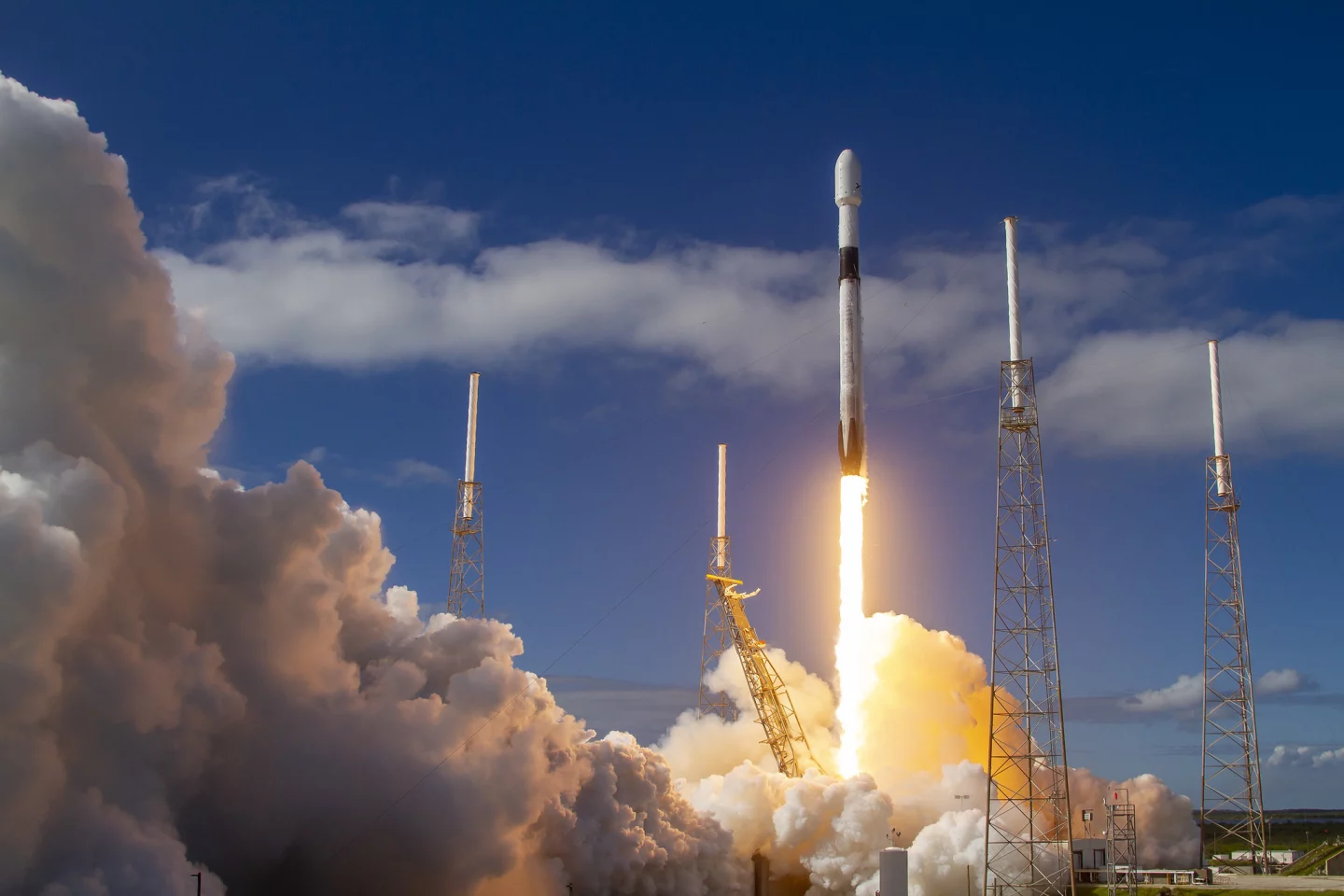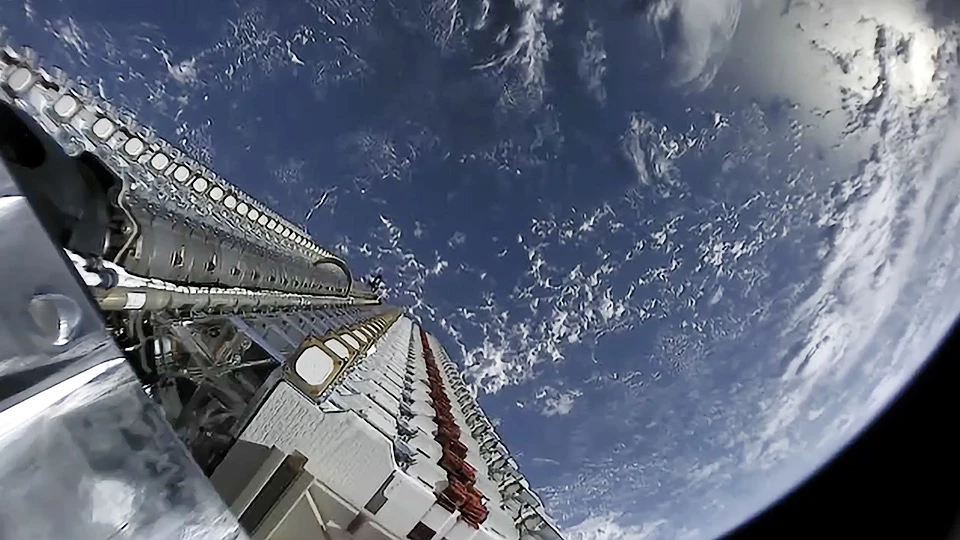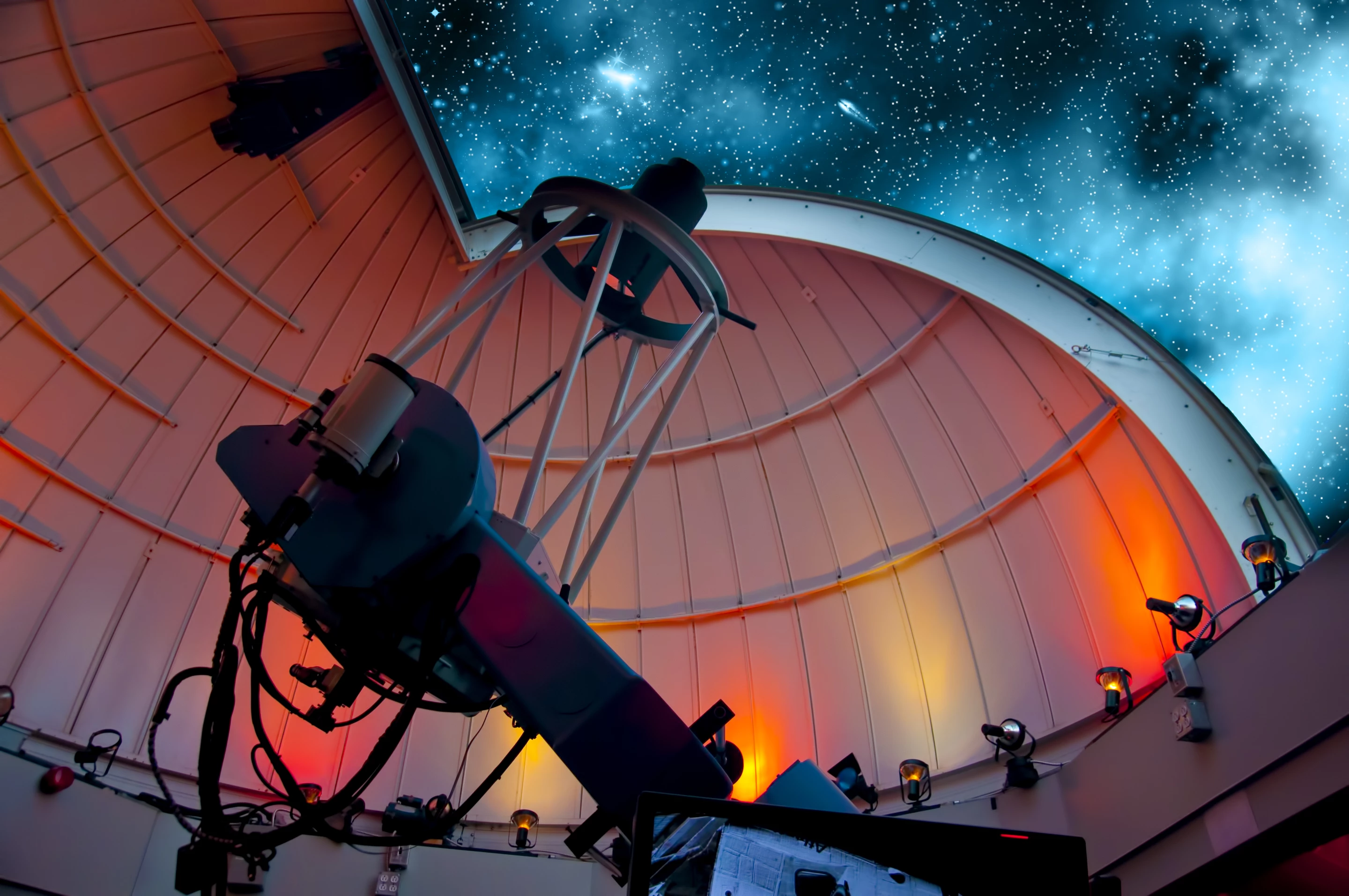Astronomers go to great lengths to find the quietest, darkest corners of the night sky. That’s part of the reason you see large telescopes carefully placed in remote parts of the Earth, like the foothills of the Chilean Andes or a mountaintop in Hawaii, rather than near the swarms of light pollution generated by our bustling cities. But for the scientists toiling away at these observatories, a new breed of satellites threatens to ruin the views in very damaging ways. And the problems don't end there.
Internet for all
The Soviet Union launched Sputnik, humankind's first artificial satellite, into space in 1957 and thousands have followed in its footsteps since. These satellites have brought us modern weather forecasts, new-age environmental monitoring and reliable mobile internet. These days, there are around 5,000 satellites in low-Earth orbit, though only around 2,000 active ones. But this could be about to change in a big way.
Earlier this month, SpaceX launched 60 of its Starlink satellites into space. These followed another batch of 60 it released into low-Earth orbit in March, bringing the total to 120. All going to plan for the company, these will be just the first of up to 42,000 satellites, blanketing the entire Earth in high-speed internet and connecting the billions of people that currently go without, mostly in the world's developing regions. SpaceX hopes to offer this service in the northern US and Canada in 2020, and then "rapidly expand to near global coverage of the populated world by 2021."
6 more launches of 60 🛰 for initial activation, 12 for significant coverage
— Elon Musk (@elonmusk) May 16, 2019
Nobody would argue that this isn’t a worthwhile objective. Internet connectivity is a huge driver of economic growth and by offering access to online education, healthcare and financial tools, is very much life-changing on an individual level. And SpaceX is far from the only company to entertain the idea.
Back in 2013, Facebook teamed up with a bunch of tech heavyweights such as Nokia, Samsung and Ericsson to launch Internet.org. The venture would lead the social media giant to test out massive solar-powered drones that beam broadband internet down to the ground to connect parts of the global population that are currently without internet. Google’s has pursued a similar idea through Project Loon using high-altitude balloons.
And SpaceX isn’t alone when it comes to the idea of space-based global internet, either. Amazon plans to create a similar constellation of broadband-beaming satellites through its Project Kuiper, while OneWeb is another company working to establish a network of broadband satellites for the entire globe.
By virtue of having its own rockets to launch things into space, however, SpaceX is the only one of these companies with the capacity to begin building out its constellation and commodifying low-Earth orbit.

“We see this as a way for SpaceX to generate revenue that can be used to develop more advanced rockets and spaceships,” CEO Elon Musk said in May, as reported by Time. “This is a key stepping stone on the way toward establishing a self-sustaining city on Mars and a base on the Moon.”
Light pollution and potential for collisions

It's not that satellite trails haven't appeared in astronomer's images before. It's that SpaceX is planning to create so many of them, combined with its full-steam ahead approach, that is making some uneasy.
"The organisation, in general, embraces the principle of a dark and radio-quiet sky as not only essential to advancing our understanding of the Universe of which we are a part, but also as a resource for all humanity and for the protection of nocturnal wildlife," read a June statement from the International Astronomical Union following the first Starlink launch. "We do not yet understand the impact of thousands of these visible satellites scattered across the night sky and despite their good intentions, these satellite constellations may threaten both."
"For astronomers, Elon Musk’s SpaceX Starlink is comparible to someone sneaking into your livingroom with a jar of fireflies and releasing them during the finale of Game of Thrones." - Dunlap Professor and Tap host Dr. Mike Reid gives us his space news roundup. pic.twitter.com/9sXxI9rfPT
— Dunlap Institute (@DunlapInstitute) November 23, 2019
The expectation, among SpaceX and astronomers alike, is that the Starlink satellites won’t always be so bright. The satellites are en route to a higher orbital altitude of 550 km (340 mi), where they won’t be as obvious through the telescopes of astronomers, at least to the naked eye. But the prospect of tens of thousands making the same journey over the coming years is still cause for concern.
“The Starlink satellites are bright,” Stephanie Hamilton, a planetary astronomer and National Science Foundation research fellow, explains to New Atlas. “While it's true they are still raising their orbits and will become less visible, they will not be invisible. The satellites particularly interfere in the time after sunset and before sunrise, when there is still valuable science to be done, specifically on searching for potentially hazardous near-Earth asteroids.”

Further to potentially compromising efforts to avoid catastrophic collisions between space rocks and Earth, the Starlink satellites could create collisions of a different kind. There are currently tens of thousands of pieces of space debris whizzing around the Earth in excess of 20,000 km/h (12,000 mph), made up of busted up rockets, chunks of broken satellites and defunct spacecraft.

As it stands today, this is already a significant problem. Large space agencies like NASA and the ESA, along with different research groups around the world, are dreaming up ways to tackle the monumental problem of space junk and it is proving a tall order. As an indicator of how difficult it is to monitor the whereabouts of space debris and satellites already in orbit, consider this incident in September, between ESA’s Aeolus satellite and, you guessed it, a Starlink satellite.
“Tracking is currently done by one branch of the US Air Force, the 18th Space Control Squadron, whose computer systems are archaic at best,” says Hamilton. “The computer takes input from radar and telescopes around the world, and sends alerts about possible collisions via email. Which as everyone with email knows, emails can easily be missed. In fact, this *already happened* after Starlink's first launch – one of the satellites had a higher-than-acceptable collision probability with a European Space Agency satellite over the summer, and SpaceX missed the alert email, so the ESA had to move their satellite.”
SpaceX attributed this error to a bug in its paging system that prevented the Starlink operator from taking evasive action, and says it has since investigated and taken corrective action. The company’s website for the Starlink project makes note of the problem of space denbris, and the company reiterated its approach to New Atlas via email.
“With comprehensive space safety capabilities already in place – automated collision avoidance, sharing of high-fidelity tracking data with all other satellite operators, and responsible de-orbiting plans – Starlink is on the leading edge of on-orbit debris mitigation that meets or exceeds all regulatory and industry standards.”
That may be true of the regulations and standards today. But SpaceX will have a task on its hands as things become more crowded in orbit, as most expect that they will.
“SpaceX is currently the only company launching a constellation of satellites but that may not be the case in the future,” Patrick Treuthardt, astrophysicist at the North Carolina Museum of Natural Sciences, tells New Atlas. “Their 42,000 satellites would already be a large number of objects to track in orbit. If others follow suit, it could lead to problems. There is a scenario proposed by a NASA scientist, Donald Kessler, known as the Kessler effect. The idea is that if the density of objects in orbit becomes high enough, a collision could set off a cascade effect of debris that could make a certain orbital range difficult to use for some time.”
The physical problems of adding a further 42,000 man-made objects to low-Earth orbit is a big picture, long-term issue, as it will be years and perhaps decades before SpaceX’s Starlink constellation is complete. Though they only number 120 today, here and now they are already having a very real effect, as we can see in the short clip below.
Starlink satellites during a meteor shower on Nov. 22. pic.twitter.com/wJVk1qu49E
— Patrick Treuthardt, Ph.D. (@PTreuthardt) November 25, 2019
“When you are granted observing time on a large telescope, you are never given more than you need,” Treuthardt tells us. “You have to be very efficient with the time you are given. You may spend an entire night collecting long exposures of a single object in order to see something no one has observed before with that level of detail. If a satellite happens to pass into your field of view and reflect sunlight in one of your exposures, it may overwhelm the object you intended to observe. The frame may not be salvageable and you will have lost precious time.”
Here’s the Starlink plagued DECam frame: #FieldOfSatTrails pic.twitter.com/TyFSJO9LKR
— Cliff Johnson (@lcjohnso) November 18, 2019
“A satellite in an astronomical image will appear as a streak through the image,” explains Hamilton. “Many astronomical observations involve taking repeated images of the same area of sky, which allows astronomers to more easily filter out spurious differences between the images. However, there's an added computational cost to do this, and data processing becomes more complex. Furthermore, the Starlink satellites in particular flare in brightness and easily overwhelm our very sensitive detectors. When that happens, software corrections are no longer sufficient – the bright satellite causes additional artifacts in the image that we can't correct for.”
Beyond what astronomers can see of the universe through telescopes that collect different types of light, the Starlink constellation could also affect what they can’t see. The field of radio astronomy focuses on gathering radio waves traveling across the universe and translating those signals into invaluable discoveries, like the fast radio bursts that have recently presented one of modern astronomy’s most intriguing mysteries. The fear is that the radio frequencies used by the Starlink satellites could make this process a whole lot harder.
“Radio astronomers already have to contend with an extremely radio-noisy Earth to do their observation,” says Hamilton. “There are precious few radio bands that remain uncontaminated, and these mega-constellations threaten to encroach on these bands and render Earth-based radio astronomy effectively crippled.”
So where to from here?
SpaceX has moved to address the concerns of radio astronomers and pointed out over email that it has “proactively coordinated with the European radio astronomy community and NROA (National Radio Astronomy Observatory) in ways in which we can work together to protect critical radio astronomy activities.”
This could mean defined exclusion zones for the satellites or working together to place radio antennas in locations that minimize the impacts of the Starlink constellation. On the visible side of things, SpaceX says it “actively working with leading astronomy groups from around the world to make sure their work isn’t affected,” and is taking steps to make the "base of the Starlink satellites black."
Agreed, sent a note to Starlink team last week specifically regarding albedo reduction. We’ll get a better sense of value of this when satellites have raised orbits & arrays are tracking to sun.
— Elon Musk (@elonmusk) May 27, 2019
“SpaceX has already started working with the astronomical community to lessen the reflectance of their satellites, which would make them fainter,” says Hamilton. “This is really encouraging to me, but as far as I know there been no report as to when such changes to the satellites might be incorporated. I'd like more communication from SpaceX on that front. “
Another issue is that making the base of the satellites black will help, but it is unlikely to satisfy all corners of the community.
“I read a comment on Twitter that said that the Starlink satellites should be painted in Vantablack,” Treuthardt tells us. “This may ease the problem for telescopes observing in the visible part of the spectrum, but would not be so helpful for near-infrared observing.”
SpaceX has given every indication that it is listening to concerns around its Starlink project, and has been for some time. But it is clear that satisfying the astronomy community while simultaneously lifting thousands of satellites into orbit is going to be a tall order.

“The hard question is what steps can be taken where both astronomers and companies launching these satellite constellations are happy,” says Treuthardt. “I don't think there is an easy solution that will make both parties happy for the simple fact that there will be more objects between the observer and the body being observed. For astronomers, the ideal situation is to not have large numbers of reflective bodies in orbit or making them "invisible" at wavelengths and frequencies that astronomers observe at. I don't think this is a viable solution.”
This issue is about more than just SpaceX. With more and more private companies developing their own launch capabilities, we’re at an interesting and important juncture in a new era of space exploration. And perhaps it will be the prospect of tens of thousands of Starlink satellites launching over the coming years that gives everyone pause.
“In the longer term, I'd like to see regulations put in place regarding these mega-constellations and launches in general, since I do not agree with large companies like SpaceX and Amazon being able to launch whatever they want to space,” says Hamilton. “We should be having these conversations before anything goes up, not after.”
SpaceX has plans to launch as many as 24 Starlink missions in 2020.






